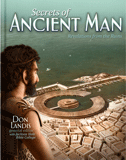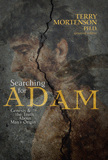
Chapter 11
Ancient Man and Intelligence: Were People Originally Dumb Brutes or Brilliant?
Editor's Note: This article was written with assistance from the ancient man research team from Jackson Hole Bible College.
Was ancient man (or mankind) intelligent? Many Christians today have unanswered questions about the authority of the Bible due to their acceptance of an evolutionary timeline of history and, in particular, their view of mankind within that timeline. If the claims that mankind emerged from the slow process of evolution are true, then the Bible must be wrong, because the biblical record tells us that men were intelligent since the day of their creation (e.g., able to converse with God, able to work, and so on).
Yet our modern society believes we are just reaching the height of human intelligence and capabilities. If we accept this evolutionary view, what do we do with the biblical account about ancient man? Is it completely unfounded and simply a myth? Or is the Bible true and verifiably so, thus making the evolutionary timeline errant?1
Most secular historians have not completely ignored the record of the Bible. However, they cite it as simply a source of information (e.g., a document of men, without God). In doing so, they undermine the authority of Scripture by not placing the Bible in its rightful place. Many Christians unwittingly accept this abuse of God’s Word and furthermore even promote it! When it is assumed that the Bible is only one of many records of early man and it is placed in a timeline alongside the other legends predating it, two key points are missed:
- God existed before creation and is the infinite, omniscient, and omnipresent Creator and, as such, He is the ultimate authority above all things (Genesis 1:1; Isaiah 40:28; Isaiah 40:14; Proverbs 15:3; Psalm 24:1).
- The Bible is the inspired, inerrant, infallible, and authoritative Word of God, given to us as God spoke through human writers (2 Peter 1:21; 2 Timothy 3:16).
Therefore, God’s account of what happened at the beginning of time, and since then, is accurate and true, and it is fallible man’s accounts of history that is subject to error. No matter when in human, historic time the Bible was actually penned or by whom, it has priority over any other account. In our book, The Genius of Ancient Man,2 we refer to this idea as the “priority of God in sequence and time.” God predates the universe and all human history; He was actually there, and His account (which He revealed to us in His Holy Word) is the accurate one.
What about Legends, Myths, and Pagan Histories?
All non-biblical records and legends of the beginning come from oral (or written) traditions passed down through the descendants of Adam and Eve.3 They are often mutilated and distorted while still containing some elements of the original truth concerning human history. Unfortunately, some of these accounts are given more historical “credit” because they predate the writing of the Bible. Historians tend to give priority to older documents. Television, movies, books, and modern education continue to undermine the validity and authority of Scripture by quoting the Bible as a late source. Even the Christian world is being fed a secular timeline of historical events. The Bible may be accurately quoted, but it is not given proper authority over all other pieces of historical data.
For example, secular historians give the Code of Hammurabi superiority over God’s Law found in the Pentateuch (the first five books of the Bible, written by Moses). Hammurabi, an ancient Babylonian king, wrote this set of laws about 340 years before Moses.4 The Code appears to have a moral basis similar to that of the Pentateuch. The assumption is that since Hammurabi wrote before Moses, then Moses’s writings are a copy or revision of this previously written moral code. Some historians theorize that Moses even stole or edited many such codes that predated him. So the authority of the Bible is undermined because God is no longer the original author of moral law! Moses is depicted as a compiler of good thoughts and morals that are essentially without truth or integrity. However, if God revealed the truth to Moses, then it was the authoritative, original truth. All the previous allusions to morality or history are distortions of the original and diluted with man’s fallible ideas.
Because Christians have become accustomed to merely accepting these things without challenge, they are in danger of rejecting scriptural authority as a whole.
If the secular world only presented this occasionally, it might not have a wide effect, but we are literally flooded with this idea from different avenues of the media. Without thinking it through, the average Christian subconsciously assumes it is true and thus their confidence in the text of God’s Word is devalued. Because Christians have become accustomed to merely accepting these things without challenge, they are in danger of rejecting scriptural authority as a whole.
The study and correct evaluation of ancient man according to the biblical timeline becomes an apologetic vehicle of argument concerning the truthfulness, credibility, and authority of the Scriptures.
Two Views of History
Evolutionary History (Man Is the Authority): If evolution is accurate, then the sequence of life forms transitioning from single-celled organisms to humankind demands simplicity leading to complexity. This means the early animals would be weaker in mental ability and awareness. As early pre-man developed, he would be a simple thinker with limited ability to contemplate life. In modern terms, pre-man would have been stupid and illiterate. Ancient men would have lived as evolution depicts them, eating raw meat and dragging their women around by the hair and living in caves. Then, as man continued to evolve, he became more intellectual and aware and led us to where we are today: sophisticated 21st-century man.
Biblical History (God Is the Authority): The first humans were made in God’s image and therefore created very intelligent (Genesis 1:27). The early chapters of Genesis tell us that Adam and Eve were moral beings who could communicate with God and each other, rationalize, name things, and work. Their descendants were gardeners (Genesis 4:2), musicians (Genesis 4:21), builders (Genesis 4:17), and metal workers (Genesis 4:22). Man was made in the image of an intelligent, moral, and creative God.
These two opposing views (based on presuppositions and biases) are easy to understand and follow to their logical conclusions. Yet the implications of each are profound. For if evolution is true, then the further back one studies into human history, the simpler and less sophisticated man should be (not to mention that nothing ultimately matters in this worldview). But if we hold that creation is true, then the evidence we find should portray great intelligence and advanced ancient cultures. So what is it that we find through scientific and historical discoveries?
Using Evidence, Which Model of History Is Correct?
The truth is, there is a vast amount of evidence, much of it ignored by scholars who are working from the paradigm of evolution, which clearly shows that early man could build, think, and design very complex cities and empires. They could create with technology that is still unexplainable. They had structured cultures and societies that show an appreciation for beauty and order. They were adept astronomers, fundamentally religious, and dedicated builders.
Ancient man’s intelligence is proven by data that is now becoming available to anyone. It directly contradicts the stereotypical view of early barbaric man, dressed in animal skins and searching for the formula for fire. Unfortunately, much of the archeological evidence is basically ignored because it does not fit the evolutionary timeline. There are some who acknowledge the evidence of ancient genius, but they hold the rather mystical view that aliens from outer space endowed ancient peoples with their inexplicable knowledge and ability.5 But the ever-growing list of new discoveries reveals that the data best fits the biblical paradigm.
Man was intelligent from the beginning just as the Bible indicates.
Just as the fossil record attests to the authority and accuracy of the biblical text (e.g., a global Flood), so does the study of early man.6 When the picture of ancient man is clearly seen and the evidence evaluated from a proper perspective, there is no alternative: man was intelligent from the beginning just as the Bible indicates.
Examples of Ancient Man’s Genius
As more researchers stop ignoring the data, more evidence is being reported and catalogued. The amount of information continues to grow, and we can use it as a good confirmation of biblical history. In light of this new research and evidence, we can confidently state that ancient peoples had exceptional capabilities in construction, astronomy, and transportation. Their architectural skill is still an unsolved mystery. Without the use of modern power tools or machines, early man constructed large buildings with incredible precision. Many of these ancient structures were built in line with astronomical events such as solstices and equinoxes (this is known as “archaeoastronomy”). As far as we know, ancient civilizations did not possess computer technology and yet demonstrated an advanced understanding of the heavens.
The following information gives strong evidences for ancient man’s genius around the world.
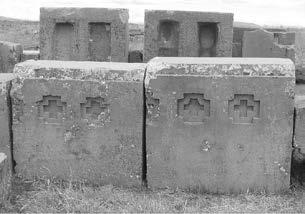
Puma Punku
(photo: Wikimedia Commons)
Puma Punku
Part of a large ancient city known as Tiwanaku in Bolivia, this archeological site displays one of the greatest examples of advanced stone-cutting techniques. The blocks are cut and shaped so well they fit together perfectly. In fact, they are so well cut that even robots today would have trouble making the stones so precise.7

Palace of Knossos
(photo copyrights: Ken Zuk)
Palace of Knossos
Part of the Minoan civilization on the island of Crete, existing between 2100 B.C. and 1450 B.C., the palace is a highly advanced structure that is perhaps the most impressive ancient structure in Europe; it possesses a water and drainage system and was built to withstand earthquakes and to use sunlight to brighten rooms deep within the palace.8
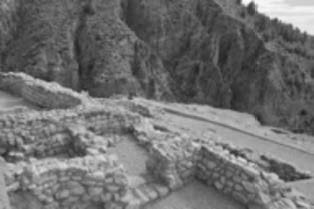
La Bastida
(photo: Wikimedia Commons)
La Bastida
A fortress located in the Agaric region of Spain dating to around 2200 B.C., it displays that the people who built it possessed advanced military techniques, as well as the oldest arch in the world. 9
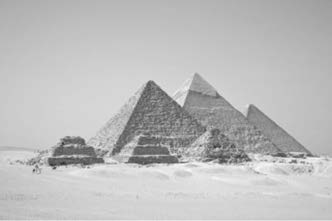
Great Pyramid of Giza
(photo: Wikimedia Commons)
Great Pyramid of Giza
Perhaps the most famous ancient structure in the world, the Great Pyramid is the pinnacle of ancient man’s ability to construct advanced buildings. It is not only massive in size; it is precisely aligned with true north within 3/60 of a degree. Its base is only 7/8 of an inch out of level and it covers an area of 13 acres. It, along with the two neighboring pyramids, may be aligned with Orion’s belt. Another factor exhibiting its advancement is that the mortar used was stronger than rock, most with less than 1/50 of an inch between them. Over a million stones were used in its construction, averaging 2.5 to 15 tons each. The heaviest weighs around 80 tons!10
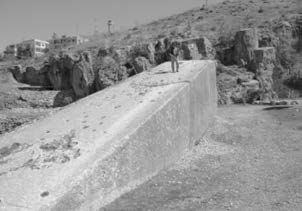
Baalbek
(photo: Wikimedia Commons)
Baalbek
A temple in Lebanon, it was designed to withstand earthquakes. The foundation of the temple has no known origin. This site possesses the largest stones ever cut. The three large stones (made of limestone) are labeled the Trilithon stones, and each weighs 800 tons. The lower layers are made up of smaller stones (though still very large), which allowed them to move with the earth during earthquakes, thereby making them stable.11

Stonehenge
(photo: Wikimedia Commons)
Stonehenge
Located in England, this is one of the greatest examples of archaeoastronomy in the ancient world. It was likely used to predict when the solstices, equinoxes, and cross quarter days would occur each year. It is yet a mystery as to how these stones were moved, but they are a perfect example of ancient man’s knowledge of the sky.12
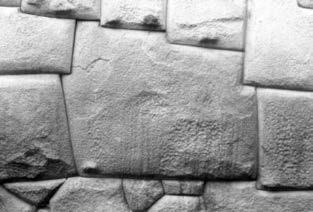
Cuzco
(photo: Wikimedia Commons)
Cuzco
Located in Peru, Cuzco was the first Incan capital. The structures at the site are so well put together not even a knife blade can fit between the stones, yet no mortar is used as a seal. The stones used are also very large and cut at odd angles, but that did not detract from the seamless construction.13

City of Alexandria
(photo: Wikimedia Commons)
City of Alexandria
An example of archaeoastronomy, the entire city of Alexandria was originally laid out so that the sun was aligned with the main street on Alexander the Great’s birthday.14

Harappa
(photo: Wikimedia Commons)
Harappa
Located in the Indus valley of Pakistan, it dates back to around 2300–1900 B.C., and it is yet unknown as to why it fell, but it began a rapid decline around 1900 B.C. There are several large domiciles, including a citadel and baths, and large, strong walls. It was primarily a city culture, and used bricks in construction. It also had advanced systems of agriculture, irrigation, and sanitation. There is little evidence for warfare, monarchies, temples or religious deities, slavery, or class distinctions. However, they did have precise measuring systems as well as a form of writing.15

Antikythera Mechanism
(photo: Wikimedia Commons)
Antikythera Mechanism
Found off the island of Antikythera, Greece, it dates to around the second century B.C.; it is one of the most advanced artifacts ever found. Around the size of a shoebox, it is believed to have predicted movements of the sun, moon, 12 signs of the zodiac, and possibly five planets. It also tracked the four-year cycle of the Olympic games. Thirty of its gears are still intact, but it may have once had 37.16
Ancient Man and the Historic Ice Age
A relatively new and very recent series of discoveries is bringing shock waves to the archeological world. Underwater archeological sites showing evidence of Ice Age civilizations are being discovered at an ever-increasing number.
Since we believe the Bible is true and therefore the Flood of Noah actually took place, we see how perfectly these new discoveries fit into the timeline of the text.
There are studies that indicate that the Flood was followed by a global Ice Age.17 There are also legends around the world that describe an Ice Age in earth’s history.18 It is theorized that there was a massive buildup of ice in the polar regions of the world during this time, and this would have lowered the water levels of earth’s oceans. In Genesis 11, God scattered man because of the rebellion against Him in the building of the Tower of Babel. The city was built to keep man together (Genesis 11:4), directly defying God’s command to “fill the earth” in Genesis 9:1. Due to the Ice Age, lower water levels would have allowed man to travel greater distances as the people scattered, settling in new lands, often along subtropical coastlines using land bridges to cross to the Americas, England, Japan, and so on.19 But these water levels would have risen again as the earth began to warm and the ice caps melted, and slowly covered the coastal cities. This is most likely why many ancient structures have been found largely intact under the earth’s oceans.
Examples of underwater sites include Yonaguni near Japan, Dwarka near India, and Yarmuta near Lebanon; there is also evidence of extensive urban civilization off the coasts of both Cuba and Greece.20 This is a very exciting new field of study that will continue to confirm the truth of Scripture.
The Implications of the Tower of Babel
Along with the truth of intelligent ancient man, the biblical account demands the truth of the city of Babel. The Bible records that mankind gathered together:
And they said, “Come, let us build ourselves a city, and a tower whose top is in the heavens; let us make a name for ourselves, lest we be scattered abroad over the face of the whole earth” (Genesis 11:4).
In rebellion against God, they formed their own unified government, a counterfeit religion, and a man-centered philosophical system of thought. Some of these concepts were carried throughout the world by those dispersed from Babel.
Thus, the characteristics of Babel are reflected in the ancient empires and cultures all around the globe. The astonishingly advanced civilizations show incredible similarities. Their religious practices such as pagan sacrifice, sun and star worship, and devotion to a false trinity all have their roots in Babel. The pyramids and ziggurats and mounds built around the world are likely examples of man-made mountains, built in rebellion against God, just like what was introduced at the Tower of Babel.21 It is fascinating to study the ancient and recognize the elements of biblical truth that were present, as well as the perversions that were introduced throughout history.
The Decline of Early Man
Some skeptics might question: if ancient man was intelligent and built such amazing, highly developed civilizations, where are they today? Why is there such a large segment of human history showing men with little ability or technological progress?22
It is clearly written in Genesis that Adam and Eve were not created infinite, but “very good.” Their sin against God brought an abrupt end to that innocent state, ultimately resulting in death.
When Adam sinned, God placed a curse on the ground that affected the whole universe, a punishment of death instigating a downward spiral to all of creation, including man’s being (Genesis 3; Romans 8). Adam and Eve began to die physically (their bodies would deteriorate with age until they died), they died spiritually (they were separated from God), they died mentally (the superior intelligence and capabilities of their minds were weakened), and they died socially (they hid their nakedness from each other). This picture of history is not one of early man moving up a gradual ladder of development via evolution but of the first man, in his created state, rebelling against God and degenerating downhill, “devolving,” if you please.
The Bible also records that ancient men lived extraordinarily long lives (Genesis 5 and 11). Until the effects of the Curse became more severe and their life expectancy dropped dramatically, they were able to pass on their knowledge to the next generations.
It is true that if one only goes back to the mid-history of early man, there is evidence of a lack of knowledge and skill (often when pagan religions started bearing their fruit and suppressed such things), but if one jumps over this period to even earlier times, the intelligence is remarkable. In our research for The Genius of Ancient Man, it became clear that some of the knowledge from these highly advanced, early generations was passed on, although much was eventually lost as time progressed.23
Aren’t We More Intelligent Now Than We Ever Were?
In present times, we are again amassing vast amounts of knowledge and data. In this, modern man takes pride and in fact assumes it is an evidence for evolution. But this is not true. It has taken hundreds of years for our knowledge of technology and science to reach where it is today.
Man’s inherent inquisitive nature, evident in an ongoing pursuit of education, testifies that something was lost in Eden. Mankind longs to know things and to discover. He longs for intelligence. He longs to improve himself. This is because he is trying to get back to the way things were (and also hints back to the Fall and man’s desire to be like God recorded in Genesis 3).
Though the massive amount of technical data we have accumulated seems impressive, an honest evaluation of our society today still reveals a barbaric inhumanness. For example, in recent times millions were killed by Hitler, Stalin, Lenin, Mao Tse-tung, and other despots.24 Man is not evolving upward into something better. Rather, these recent events confirm the depraved heart of man and not the ascendency of the human spirit. We think we have reached great heights of technology, but the wisdom of man has led only to an intellectual and moral insanity.
Conclusion
Christians have nothing to be ashamed of when it comes to the timeline of history and ancient man. We need not “hide our heads in the sand” on any truth supposedly “proven” by secular archeology or science or by any discovery — past, present, or future. Observational science and history continue to confirm, support, and validate our faith.
The truth is, man was brilliant — brilliant in all the splendor of unspoiled creation, brilliant in intellect and imagination, brilliant in creativity and invention. But with the entrance of sin and the Curse, man began and continues a downward spiral in his rebellion. Without the hope of salvation through the Lord Jesus Christ, man is ultimately doomed to the wrath of God. But we who are believers in Christ have this hope that one day, because of Christ’s atoning work, we will again be brilliantly glorified with Him (Romans 8:16–30).
The Bible is true, in far more ways and detail than even imagined by today’s believers. Do not undermine its authority. Do not doubt its inerrancy. Stand firm, “Test all things; hold fast what is good” (1 Thessalonians 5:21).
The New Answers Book 4
Building on the previous New Answers Books, learn more about the Gospel and a young earth, death of plants and leaves, dragons, religious wars, cavemen, science, living fossils, and more.
Read Online Buy BookFootnotes
- For a discussion of philosophical issues of the Bible’s truthfulness, see Ken Ham and Bodie Hodge, gen. eds., How Do We Know the Bible Is True? Vol. 1 (Green Forest, AR: Master Books, 2011).
- Don Landis and a team from Jackson Hole Bible College compiled an in-depth study of ancient man according to the biblical historical record. Their research is presented in the book The Genius of Ancient Man (Green Forest, AR: New Leaf Press, 2012).
- In some cases, there may be completely “homemade” stories to try to counter others of ancient man’s day and age, but all false ideas of origins originate in the mind of fallen beings, such as mankind.
- Hammurabi’s law code was written in 1786 B.C. For more information, see Don Landis, “Hammurabi or Moses — Who’s the Authority?” Answers, January–March 2012, p. 80– 81. See also Landis, The Genius of Ancient Man, p. 16–17.
- Proponents of this theory include Richard Dawkins, David Childress, and Robert Bauval.
- For further information on how the fossil record supports biblical authority, see Dr. Andrew Snelling, “Order in the Fossil Record,” Answers in Genesis, http://www. answersingenesis.org/articles/am/v5/n1/order-fossil-record, and John D. Morris and Frank J. Sherwin, The Fossil Record: Unearthing Nature’s History of Life (Dallas, TX: Institute for Creation Research, 2010).
- See Landis, The Genius of Ancient Man, p. 52.
- Matthew Zuk, “The Genius of Ancient Man: The Minoan Civilization: Proof of Advanced Nature”; http://geniusofancientman.blogspot.com/.
- Matthew Zuk, “The Genius of Ancient Man: La Bastida: Europe’s Most Formidable City”; http://geniusofancientman.blogspot.com/2013/03/la-bastida.html .
- See Landis, The Genius of Ancient Man, p. 63, as well as the book’s blog at www.geniusofancientman.blogspot.com.
- See Landis, The Genius of Ancient Man, p. 69-71.
- Ibid.
- Ibid.
- Stephanie Pappas, “Ancient Egypt City Aligned With Sun on King’s Birthday,” Live Science, http://www.livescience.com/23994-ancient-city-alexandria-sun.html (accessed April 18, 2013).
- T.A. Kohler, “Week 16: Indus Valley (Harappan) Civilization,” Washington State University, http://public.wsu.edu/~tako/Week16.html (accessed April 18, 2013).
- See Landis, The Genius of Ancient Man, p.49.
- The Ice Age is not explicitly discussed in the Bible, but there are a few passages that imply there was a cooler climate after the Flood. There is also ample geologic evidence to suggest that it did indeed occur. Also, the possibility of an Ice Age does not conflict with the chronology presented in the Bible. See Michael Oard, “Where Does the Ice Age Fit?” Answers in Genesis, http://www.answersingenesis.org/articles/nab/where-does-ice-age-fit ; Dr. Andrew Snelling and Mike Matthews, “When Was the Ice Age in Biblical History?” Answers, April–June 2013, p. 46–52; and Landis, The Genius of Ancient Man, p. 96–97.
- See Landis, The Genius of Ancient Man, p. 77.
- Though let’s not forget that ancient man was also adept at building boats and likely went to many places by ship. There were the coastline (island or maritime) peoples in Genesis 10:5, and Noah and his sons were excellent ship builders and lived extensively after the Flood, passing along this technology.
- See Landis, The Genius of Ancient Man, p. 71.
- See presupposition 3 in chapter 2 of Landis, The Genius of Ancient Man, for more detail on the evidence of Babel around the earth. A map of the distribution of man-made mountains worldwide is found on p. 65 of The Genius of Ancient Man.
- From history, we know that man did at times live in caves and in a somewhat barbaric fashion. There are records of “stone age” type living conditions and uncivilized cultures. But this does not invalidate the text of the Bible. It is important to remember that where a person lives does not necessarily reflect the intelligence of that person. Was Jesus an illiterate, dumb brute because he had “nowhere to lay His head”(Matthew 8:20)?
- Reasons for this loss are highly speculative. For more detail about ancient technology and the mystery surrounding it, see chapter 6 in Landis, The Genius of Ancient Man.
- See chapter 5 in this volume on the results of an evolutionary worldview.
Recommended Resources

Answers in Genesis is an apologetics ministry, dedicated to helping Christians defend their faith and proclaim the good news of Jesus Christ.
- Customer Service 800.778.3390
- © 2024 Answers in Genesis



